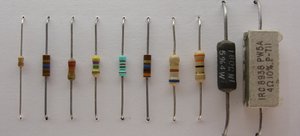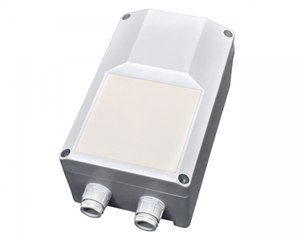What is a thyristor: principle of operation, ways to turn on and off
A thyristor is a semiconductor switch, the design of which has four layers. They have the ability to move from one state to another - from closed to open and vice versa.
Information, presented ??in this article, will help to give a comprehensive answer to questions about this device.
The principle of operation of the thyristor
In the literature, this device is also called single-operation thyristor. This name is due ??team, that the device is not fully controlled. In other words, when receiving a signal from the control object, it can only go into the on mode. To turn off the appliance, the person will have to use additional features, which will lead to a drop in voltage to zero.
The operation of this device is based on the use of an electric force field. Control technology is used to switch it from one state to another, transmits certain signals. The current on the thyristor can move only in one direction. When switched off, this device has the ability to withstand as straight, and reverse voltage.
Ways to turn on and off the thyristor
The transition to the operating state of the standard of this type of device is carried out by teaching the current voltage pulse in a certain polarity. On the speed of inclusion and on, how it will work later, are influenced by the following factors:
-
The nature of the load. The load in this case can be inductive, active, etc..
- The rate of increase of the control pulse.
- Amplitude of increase of a pulse of management.
- Thyristor medium temperature.
- The magnitude of the load current.
- The level of applied voltage.
Turning off the thyristor can be done in some ways:
- Natural shutdown. The following concept is also found in the technical literature, as natural switching - it is similar to natural exclusion.
- Compulsory exclusion (forced switching).
The natural shutdown of this device is carried out in the process of its operation in alternating current circuits, when the current level is reduced to zero.
Compulsory exclusion involves a large number of different ways. The most common of these is the following method.
Capacitor, denoted by the Latin letter C, connects to the key. It must be labeled S. The capacitor must be charged before closing.
The main types of thyristors
Currently, there are a considerable number of thyristors, which differ in their technical characteristics - the speed of operation, methods and processes of management, directions of current when in the conductive state, etc..
The most common types
- Thyristor diode. This device is similar to the device, which has a counter-parallel diode in the on mode.
- Added thyristor. Another name is dynistor. A distinctive feature of this device is that, that the transition to the conducting mode is carried out at the moment, when the current level is exceeded.
- Thyristor, locking.
- Symmetrical. It is also called a triac. The design of this device is similar to two devices with counter-parallel diodes when in operation..
- High-speed or household. This type of device has the ability to go down in a record short time - from 5 to 50 microseconds.
- Optotyristor. Its work is carried out by means of a light stream.
- Thyristor under field control on the lead electrode.
providing protection
Thyristors are included in the list of devices, which critically affect the change in the rate of increase of direct current. As for diodes, and for thyristors is characterized by the process of reverse recovery current. A sharp change in its speed and falling to zero leads to an increased risk of overvoltage.
in addition, overvoltage in the design of this device can occur due to the complete disappearance of voltage in various components of the system, example, in small mounting inductors.
For the above reasons, in the vast majority of cases to ensure reliable protection of these devices use a variety of CFTP schemes.. These circuits, while in dynamic mode, help protect the device from unacceptable voltage values..
A reliable means of protection is also the use of a varistor. This device is connected to the output points of the inductive load.
use of thyristors
In the most general form of application of such a device, as a thyristor, can be divided into the following groups:
-
Power keys. They are AC switches. One of the main factors, which led to the widespread demand for these devices, became a low level of power consumption during operation. Power is prone to scattering in switching parts. In the off state, the power loss is almost zero - this is due to this, that the voltage level in this situation is zero. When in the open state, the thyristor loses some power. However, these losses are absolutely insignificant.
- Threshold devices. The use of thyristors in these devices is due to the property of transmitting current only at a certain voltage value. These types of devices are most often used in phase regulators, as well as relaxation generators.
- DC connection. This group uses closing types of devices. They are necessary to interrupt the voltage in the circuit or to turn on and off the device.
- Experimental devices. Their use in this area is due to the property of having negative resistance while in transient mode.
thyristor restrictions
When working with any type of this device, certain safety rules must be observed, and keep in mind some of the necessary restrictions.
Example, in the case of inductive loading during the operation of this type of device, as a triac. In this situation, the restrictions relate to the rate of change of voltage between the two main elements - its anodes and operating current. An RC circuit is used to limit the effects of current and overload.



